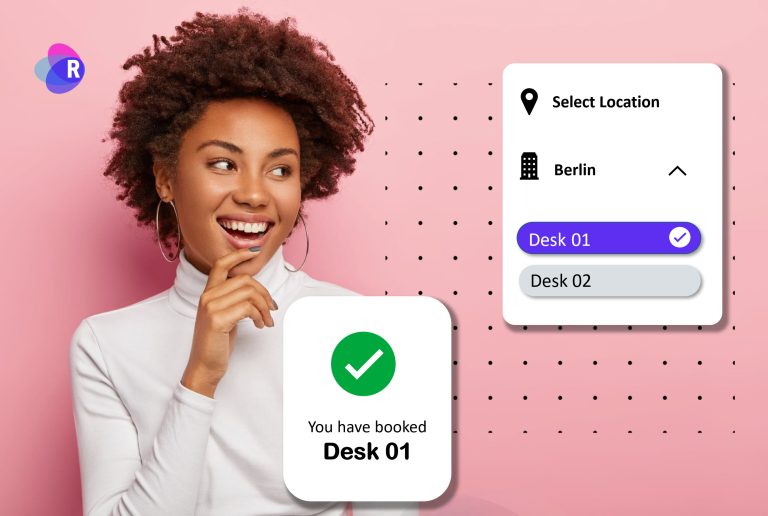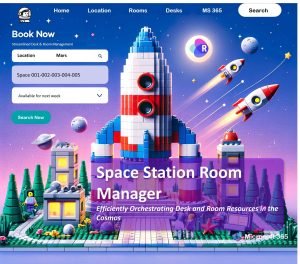Introduction to Desk Reservation Software
Managing the workspace efficiently has become crucial for organizations in today’s fast-paced business environment. Desk reservation software is a cutting-edge solution that simplifies the process of booking workspaces, ensuring an organized and seamless office experience. This article delves into the benefits of desk reservation software and how it can revolutionize your business.
Why Desk Reservation Software is Essential for Modern Workplaces
As businesses evolve and adapt to the changing work landscape, flexible workspace management solutions become more critical. Desk reservation software addresses various challenges associated with managing workspaces, providing numerous benefits for businesses of all sizes:
- Maximizes Space Utilization: Desk reservation software enables efficient allocation of workspace resources, reducing the need for additional office space and lowering overhead costs.
- Promotes Flexibility: By facilitating easy reservations of workspaces, desk reservation software empowers employees to choose the most suitable environment for their tasks, boosting productivity and collaboration.
- Enhances Employee Satisfaction: With streamlined desk reservation processes, employees can quickly secure a workspace that meets their needs, fostering a sense of autonomy and satisfaction.
- Optimizes Facility Management: Desk reservation software provides valuable insights into workspace usage patterns, enabling facility managers to make informed decisions about office layout and resource allocation.
Key Features of Desk Reservation Software
To fully appreciate the power of desk reservation software, it’s essential to understand its core features:
- Intuitive Interface: A user-friendly interface makes it easy for employees to book workspaces quickly and efficiently.
- Real-time Availability: Desk reservation software provides real-time information on workspace availability, eliminating double bookings and ensuring optimal space allocation.
- Customization: The software allows organizations to customize reservation rules and policies to meet their unique needs.
- Integration: Desk reservation software can integrate with various systems, such as calendar applications, facility management software, and access control systems, creating a seamless end-to-end solution.
- Reporting and Analytics: Comprehensive reports enable organizations to monitor workspace usage trends and make data-driven decisions.
Choosing the Right Desk Reservation Software for Your Organization
With numerous desk reservation software solutions in the market, selecting the right one for your organization can be challenging. Here are some factors to consider when evaluating different options:
- Scalability: Choose a solution that can grow with your organization, accommodating your changing needs over time.
- Ease of Use: Prioritize user-friendly software requiring minimal training and excellent customer support.
- Customizability: Opt for a solution tailored to your organization’s unique requirements, ensuring a seamless fit with your existing processes and systems.
- Security: Ensure the software adheres to industry-standard security protocols and provides robust data protection features.
Implementing Desk Reservation Software: Best Practices
To reap the full benefits of desk reservation software, it’s crucial to follow best practices when implementing the solution:
- Define Clear Policies: Establish reservation policies and communicate them to your employees, ensuring everyone understands the expectations and guidelines.
- Provide Training: Offer comprehensive training to familiarize employees with the software, making it easy for them to book workspaces and adhere to reservation policies.
- Monitor Usage: Regularly review workspace usage data to identify trends, address issues, and optimize space allocation.
- Solicit Feedback: Encourage employees to provide feedback on their experiences with the software, using their insights to make improvements and enhance user satisfaction.
Conclusion
Desk reservation software is an invaluable tool that simplifies workspace management, promotes efficiency, and fosters a positive work environment. By carefully evaluating your options,
implementing best practices, and leveraging the software’s robust features, your organization can streamline desk reservations and create a more flexible, productive workplace. Embracing desk reservation software will lead to cost savings and contribute to a more satisfied and engaged workforce. As the modern work environment evolves, adopting cutting-edge solutions like desk reservation software will prove instrumental in staying ahead of the competition and fostering a culture of innovation and collaboration.
How Desk Reservation Software Supports Hybrid Work Models
In the wake of remote work becoming increasingly popular, businesses are embracing hybrid work models, where employees split their time between working from home and the office. Desk reservation software plays a critical role in facilitating these hybrid work arrangements by:
- Enabling Flexible Scheduling: Desk reservation software allows employees to reserve workspaces as needed, providing the flexibility to work remotely or in the office as their schedules and preferences dictate.
- Fostering Collaboration: The software makes it easy for employees to reserve meeting rooms, collaboration spaces, and other shared resources, ensuring that they can effectively collaborate with colleagues when working on-site.
- Supporting Employee Well-being: By allowing employees to choose their preferred workspace, desk reservation software contributes to their overall well-being, satisfaction, and productivity.
Integrating Desk Reservation Software with Other Workplace Technologies
To maximize the benefits of desk reservation software, organizations can integrate it with other workplace technologies, creating a seamless, connected ecosystem. Some examples of potential integrations include:
- Access Control Systems: Integrating desk reservation software with access control systems can automate granting employees access to reserved workspaces and meeting rooms, enhancing security and efficiency.
- IoT Devices: Connecting the software to IoT devices, such as sensors and intelligent lighting systems, can provide valuable data on workspace usage and environmental conditions, enabling organizations to optimize their management strategies.
- Employee Communication Platforms: Linking desk reservation software with communication platforms, such as Slack or Microsoft Teams, allows employees to quickly reserve workspaces and receive reservation confirmations directly within their preferred communication tools.
The Future of Desk Reservation Software
As businesses continue to adapt to the evolving work landscape, desk reservation software will play an increasingly important role in shaping the future of workspace management. Some trends to watch for include:
- AI-Powered Recommendations: With the integration of artificial intelligence, desk reservation software could analyze employee preferences and workspace usage patterns to provide personalized workspace recommendations.
- Virtual Reality Integration: Incorporating virtual reality technology into desk reservation software could allow employees to virtually tour available workspaces, making more informed decisions about their reservations.
- Smart Building Integration: As intelligent buildings become more prevalent, desk reservation software will likely integrate with these advanced systems to provide more significant insights and control over workspace management.















